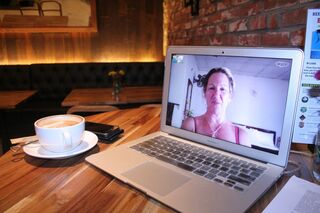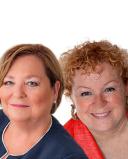Environment
The Second Wave
You aren't alone in dealing with COVID restrictions in your at-risk environment.
Posted September 29, 2020
Those dreaded words: second wave!

Sitting at my computer today, a message popped up on my phone that in my little corner of the world, the highest number of new COVID-19 cases in 24 hours had just happened. Communities have worked hard, tolerated frustrations associated with restrictions, and still many, many new people were now facing the threats this virus could exact. Some will easily recover but can unknowingly infect others. Some who might not be so lucky, including loved ones, win the fight, but have possible continued compromised health. Some will lose their lives.
Experts have been backing away from the term “second wave” in an attempt to influence us to accept that we can strongly influence the virus’ spread through wearing masks, social distancing, and respecting the personal contact “bubble principle." And yet here we are. Today’s worldwide COVID news coverage did not provide confidence or improve the prospects.
As a Hoarding Specialist, my concern began to be heightened for everyone who is now more restricted to their homes, especially those who hoard, because of the lack of mental and physical quality of life they chronically live with. Now they are going to be even more restricted to their at-risk environments.

I asked myself, “What can I do?” I decided to devote this post and the next two, plus my free weekly podcast, to help you realize you are not alone! It is best to begin by assessing the risks now while you can do something about them. You will need to create a comfortable, reassuring spot to nestle in, while you take care of yourself as we face the next challenges together. I want to provide two outlets for anyone in need to gather with others virtually and form a community that inoculates you against excessive isolation. A place to be nurtured while being in whatever state of limitation is necessary. We can learn from our past COVID experiences to manage far better and not have to pay the price our inexperience created the last time.
Whether you keep things to the extent that you actually meet the criteria for hoarding disorder, don’t meet the criteria but have a lot of things that leave you feeling frustrated or otherwise uncomfortable, or just want more serenity in your home and life when it come to "things" while you face the months ahead until a better COVID resolution is established, let’s do three things:
- Establish the facts about your environment
- Establish goals that fuel our spirits as well as our motivation and determination to persevere through to success
- Establish a plan that meets our unique needs
Establish the facts about your environment
Because safety is always the first priority, this week let’s look at fairly universal fire safety requirements. Next week, and the week after we can look at goals and a plan that meets our needs and fuels us.

Always check that your local fire services do not have other requirements, in addition to the following:
- All pathways must be kept a minimum of 33 inches clear. Because life gets in our way sometimes, I suggest you aim for at least 36 inches free and clear at all times.
- Pay special attention to paths to and from entering or exiting the house and every room in use, as well as hallways and staircases. A question to ask yourself: What would it take for you to keep all these areas completely clear? If your home is seriously accumulated, taking a temporary harm reduction approach might be necessary. That would mean storing all flammable/combustible things you can’t yet part with in a safe, unused area of the home and at least 3 feet away from any heat source. Check out our Clutter Checklist for more details.
- An attitude of immunity and invincibility from unexpected crises is common. Unfortunately, the inaccuracy of this belief is why there are First Responders. A crisis or problem avoided, is better than one that is solved. Clear hallways and staircases go a long way to avoiding those crises, whether it is slipping or falling within the residence, or exiting safely and fast enough in case of an emergency. Yes, these things do happen every day!
- Eliminate the use of all extension cords in permanent use. This does not mean grounded power cords, although I recommend you position them, so they are not a tripping hazard and inspect them regularly. They should never be covered by other items.
- A final observation in our safety audit is to ensure you have new batteries on hand to guarantee smoke and CO2 detectors are installed and operating.
While auditing your environment, don’t forget what we have learned so far. It is also extremely important in non-hoarded homes, especially during COVID times when we will be spending far more time in our homes that we do not succumb to a stronger temptation to leave things around “just for now."


